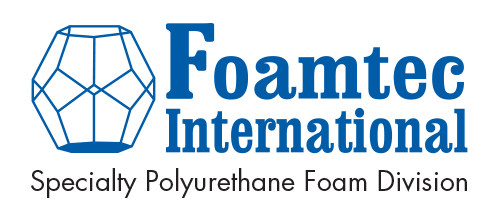
Felting
We utilize the felting process to enhance the texture and structural integrity of our foam products, making them more suitable for a variety of applications across different industries. Felting involves matting, condensing, and pressing fibers together to create a dense, durable material.
At Foamtec, we have adapted this traditional technique to work with polyurethane foam materials, allowing us to tailor the properties of the final product based on the unique requirements of our clients in automotive, consumer, industrial, and beauty sectors.
Foam that has been processed and manufactured using a heating and compression process is referred to as heat-pressed or felted foam. Felted foam, a prevalent and versatile material, is employed in a variety of settings, both industrially and commercially.
Application of Felting in Foam Production: Our felting process is designed to increase the mechanical strength and thermal insulation properties of our foam. This makes the felted foam ideal for applications requiring durability and stability under varying environmental conditions. For instance, in the automotive and aerospace industries, felted foam is used for insulation panels, sealing components, and vibration dampening solutions.
Customization and Precision: At Foamtec International, we understand that each client has unique needs. Our felting process can be customized to adjust the density and porosity of the foam to match exact specifications. This flexibility allows us to cater to the precise needs of our clients, whether they require lightweight foam for consumer goods or robust, dense foam for industrial applications.
Integration with Other Technologies: Felting is often integrated with other foam fabrication processes like die cutting, lamination, and molding to create complex multi-functional products. By combining felting with these technologies, we can produce components that not only meet the functional requirements of our clients but also adhere to the highest standards of quality and performance.
By utilizing felting at Foamtec International, we enhance our foam products to meet the diverse and demanding requirements of our global clientele, delivering solutions that are both innovative and reliable.
Felted foam offers several unique benefits that make it highly sought after in various industries. Some of the most notable benefits include:
Durability: Felted foam is incredibly robust, which means it can withstand significant wear and tear. It's often used in heavy-duty applications, such as machinery and industrial settings, due to its durability.
Versatility: Felted foam can be customized to suit a variety of needs. It can be produced in different felting rates and thickness’s for use in various applications.
Insulation: Felted foam has excellent insulation properties, making it useful for both thermal and sound insulation applications. It helps maintain temperature control and reduces the transmission of noise.
Liquid wicking and holding properties: Felted foam improves the hydrophilic property of the base foam improving a felted foams performance in containing (holding) liquids and/or absorbing (wicking liquids).
Shock and Vibration Absorption: The dense nature of felted foam allows it to absorb shocks and vibrations effectively, which is particularly useful in industrial settings or in the transportation sector.
Cost-effective: Despite its high performance, felted foam is often a more cost-effective option compared to other materials with similar properties, providing high value for its cost.
Easy to Work With: Felted foam is relatively easy to cut, shape, and install, making it a convenient material to work with in a variety of applications.
All these benefits make felted foam an excellent choice for a wide range of commercial and industrial applications.
Here are a few of the industries where felted foam is commonly used:
Automotive Industry: Felted foam is widely used in the automotive industry, especially in the manufacturing of car seats. It offers comfort, support, and durability to the seats, enhancing the overall ride experience. Additionally, it can be used for sound insulation within the vehicle.
Packaging Industry: In the packaging industry, felted foam is used as protective packaging material to prevent damage during transportation. Its cushioning properties help protect fragile items from impact and vibration.
Industrial Applications: In heavy-duty industrial applications, felted foam is used due to its ability to absorb shocks and vibrations. It helps in reducing wear and tear on machinery, contributing to longer operational life.
Construction and Building: Due to its excellent insulation properties, felted foam is often used in construction and building applications for thermal and sound insulation. It helps in maintaining indoor temperature and reducing noise transmission.
Sporting Goods: Some sports equipment, like protective gear and certain types of athletic shoes, may use felted foam for its cushioning and shock-absorbing properties.
Electronics: Felted foam is also used in the electronics industry, often for liquid holding or liquid wicking.
Remember, the adaptability of felted foam allows it to be used in many more applications and industries beyond those listed here. Its use can vary greatly depending on the specific needs of the product or application.

